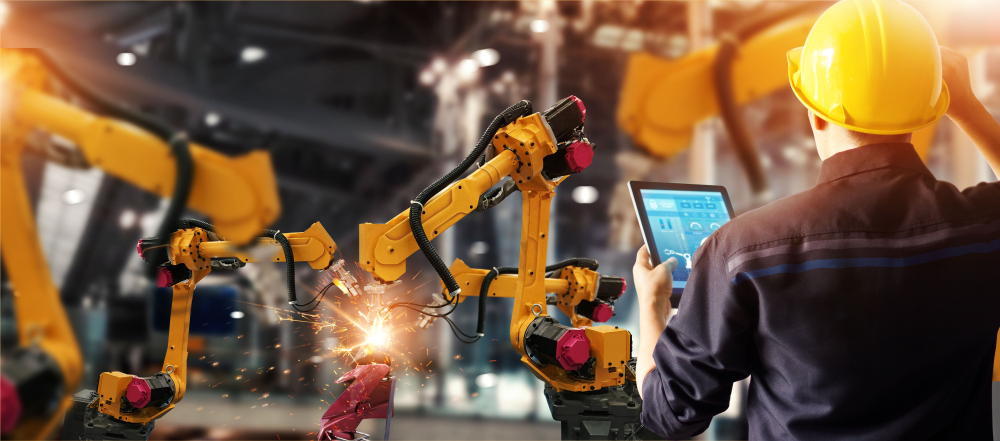The pandemic exposed the depth of challenges that manufacturers globally are facing, including rising input costs, supply chain disruption and skilled worker shortages. To combat these challenges Indian manufacturers will need to embrace the new era of “Smart Manufacturing”.
Smart manufacturing technologies have proven to be pivotal in bringing about positive impact in improving production efficiency of manufacturing units. According to a recent report, smart manufacturing implementation rates grew 50 percent from 2021 to 2022, which means two out of every three manufacturers are presently using some form of smart manufacturing element.
The global smart manufacturing market was valued at USD 88.7 billion in 2021 and is expected to reach USD 228.2 billion by 2027; it is projected to grow at a Compounded Annual Growth Rate (CAGR) of 18.5% from 2022 to 2027.
A powerful disruptive force that has the potential to restructure the competitive landscape and produce a new set of market leaders, smart manufacturing involves bringing ‘enabler’ technologies such as AI, analytics and big data, to factories and industrial settings.
But it isn’t just about new technologies – it’s about using those technologies to change how companies do business. Smart systems can help companies keep up by creating more flexible operations. Smart systems can also make companies more productive, more secure, better users of energy and more. Companies that are not equipped to embrace this change are likely to be left behind.
Succeeding Through Transformation
Traditionally, organizations in developed economies have moved their manufacturing operations to emerging economies to take advantage of relatively inexpensive labor and real estate costs. While lower labor and real estate costs remain attractive, they only go so far. These global operations still need sophisticated warehousing facilities and technology to integrate into their supply chains. If the Indian manufacturing industry can’t meet those needs, international organizations will look to ‘re-shore’ manufacturing or move to markets that can blend technological sophistication with lower capital costs.
Governments across the globe are aware of the potential of smart manufacturing and are implementing policies to leverage its power. Thankfully the Indian government is no exception. Among the initiatives undertaken to accelerate the industrial revolution 4.0, a new excellence center has been launched in Ahmedabad, Gujarat. The centre will help create a collaborative ecosystem bringing together solution seekers and providers under one virtual roof with an opportunity to understand manufacturing challenges and co-create solutions.
The Road Ahead – emerging technologies
Revived interest in IoT and enhanced emphasis on predictive maintenance means big data is a growing trend. Parts are being transformed into sensors for data collection, generating real-time insights for manufacturers. The capability to collect data from multiple sources, mixed with robust cloud computing facilities, is providing manufacturers with a better understanding of their business.
Digital twins are being progressively used as a way of linking information about a physical product and its behavior in the real world with a 3D digital representation, which is commonly employed during engineering and other areas of business for digital twins is expected to grow at a CAGR of 68.9% from 2022 to 2027, reaching USD 43,614.8 million by 2027, from USD 2,124.7 million in 2021.
The deployment of smart manufacturing solutions demands a heavy capital investment and therefore, acts as a limitation in the growth of the market worldwide. Capital is required to set up and install smart manufacturing technologies such as Automated Guided Vehicles (AGVs), Enterprise Manufacturing Intelligence (EMI) and Warehouse Management System (WMS).
The deployment of smart manufacturing technologies will result in the implementation of sophisticated equipment, such as smart field devices and industrial robots. This will allow manufacturers to combine processes, decrease human error, strengthen workplace relationships, enhance value, and modernize procedures.
It is anticipated smart manufacturing is going to be one of the leading trends for years to come. It is bound to mitigate challenges faced by organizations in the current scenario while equipping corporations to level up for the increasing demand and growth.
Authored by
Dilip Sawhney, Managing Director – India, Rockwell Automation India Pvt Ltd.
Edited & sourced by: Queenie Nair, ET Edge Insights



